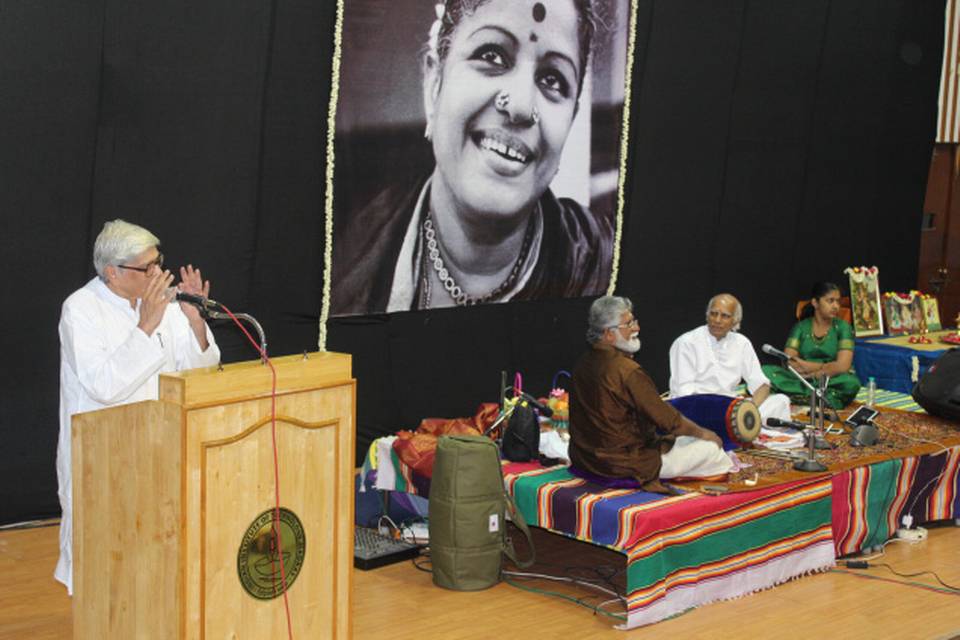When connoisseurs craved for more

This article appeared in The Hindu.
Spearheaded by musician and scholar Lakshmi Sreeram, The Music Club of IIT Madras flagged off the centenary year celebrations of MS Subbulakshmi (MS) in the city, with the concert of noted violinist Nadayogi VV Subrahmanyam (VVS).
As the chief guest Gopalkrishna Gandhi, former diplomat and Governor, observed, that VVS had accompanied Subbulakshmi regularly for years in her heyday (including at the famous United Nations concert in 1966). It was, thus, a most fitting tribute.
Few accompanists can make the cut as solo performers and vice versa – to follow and be followed require different mindsets. VVS has straddled both roles with aplomb, carving out his own inimitable style, rooted in classicism. Known for his musical acumen, he is sought out by musicians and connoisseurs alike as was evidenced by the presence of violinists S. Varadarajan and RK Shriram Kumar, mridangist Bombay Balaji, Cleveland VV Sundaram and other discerning rasikas.
VVS began with Tyagaraja’s ‘Nadha Thanumanisham’ in Chittharanjani which, grammatically, is Kharaharapriya without the upper shadjam. After a sketch of Gamakakriya, he played ‘Meenakshi Memudham Dehi’ (Muthuswamy Dikshitar) starting from the charanam, with swaras in the anupallavi at Meenalochani. ‘Janani Ninnu Vina’ (Subbaraya Shastri) was next, preceded by a detailed alapana of Reethigowlai. His kalpanaswaras, woven into the catchy ending of the chittaswaras, were so seamless that even those who knew the kriti required a few sequences to realise what he had done!
Gopalkrishna Gandhi said that ‘ethereal’ was the word that came to his mind throughout Nadayogi’s programme. As he explained so eloquently in his short, riveting speech, the word is derived from ‘ether’ – the regions beyond the heavens. And indeed, the programme was other worldly. The smoothness of VVS’s bowing and his sensitivity to volume modulation are to be emulated. His playing is a clear reflection of his knowledge of vocal music, in-depth comprehension of the prayogas of each raga and his own enjoyment of the art.
A transfixing Sankarabharanam followed, with ‘Sarojadala Netri’ (Syama Sastri) as the main piece – MS had rendered this kriti at the UN. After lovely kalpanaswaras, it was over to Trichur Narendran on the mridangam for a proportioned thani avarthanam that showcased multiple nadais.
Next were ‘Akhilandeshwari’ (Muthuswamy Dikshitar) in Dwijavanthi and ‘Sompaina’ (Tyagaraja) in Ahiri. The concluding item, Tulsidas’ ‘Sri Ramachandra Kripalu’ was set to tune by VVS in Desh, Sindhu Bhairavi and Durga. Beautifully played, it left every rasika wishing for more.